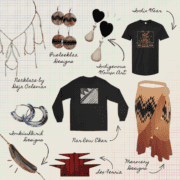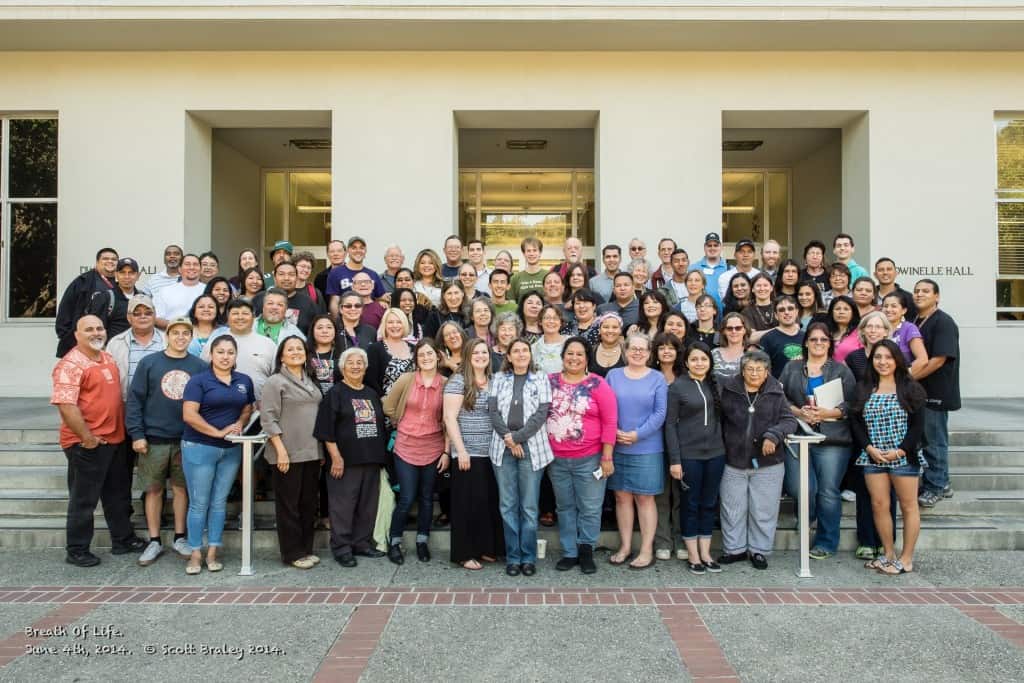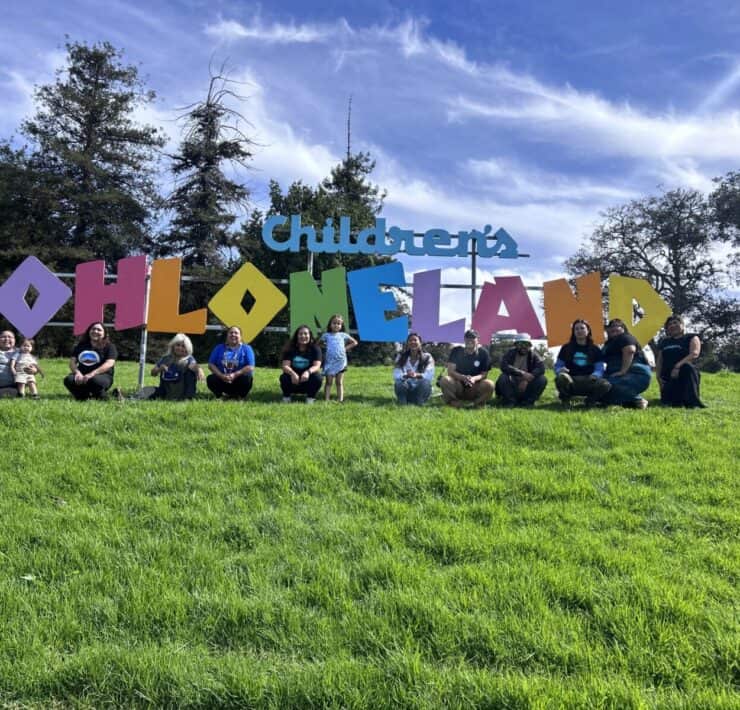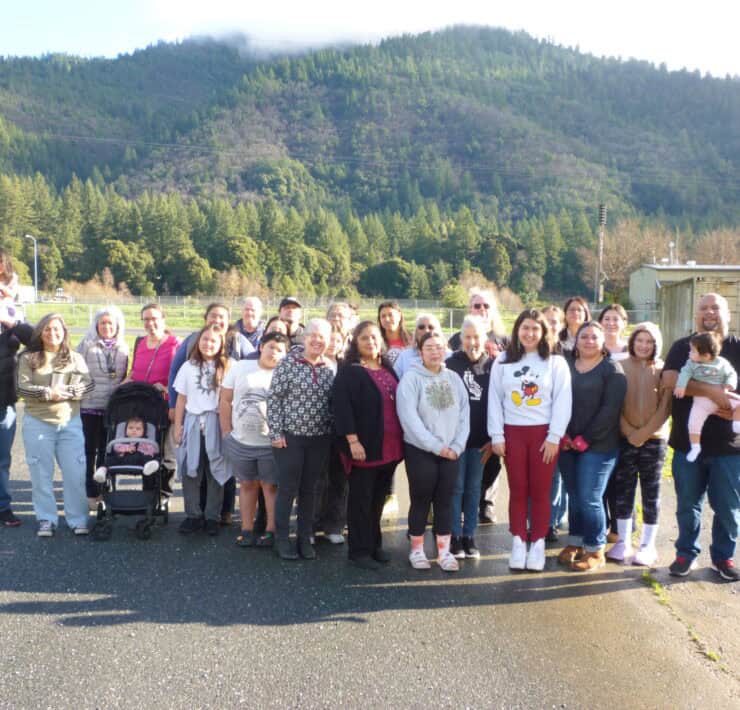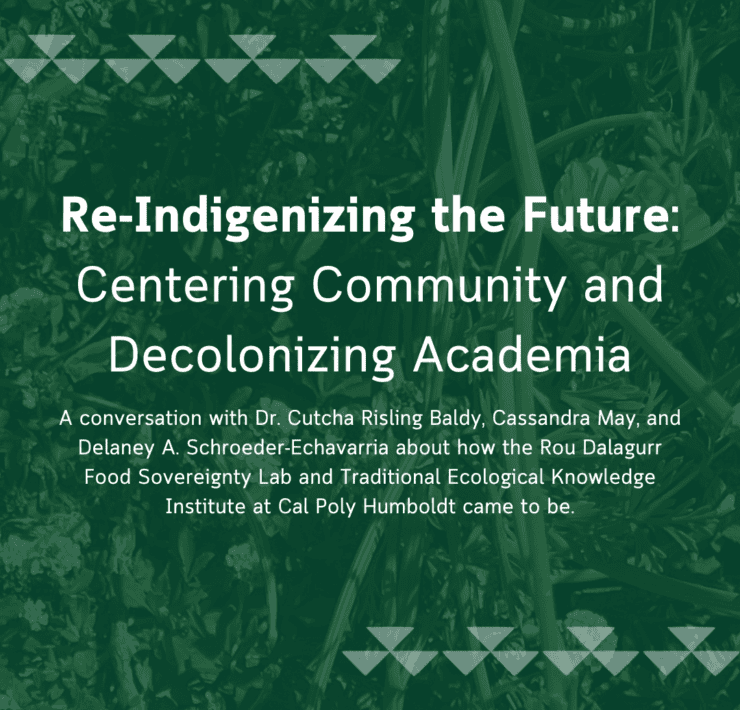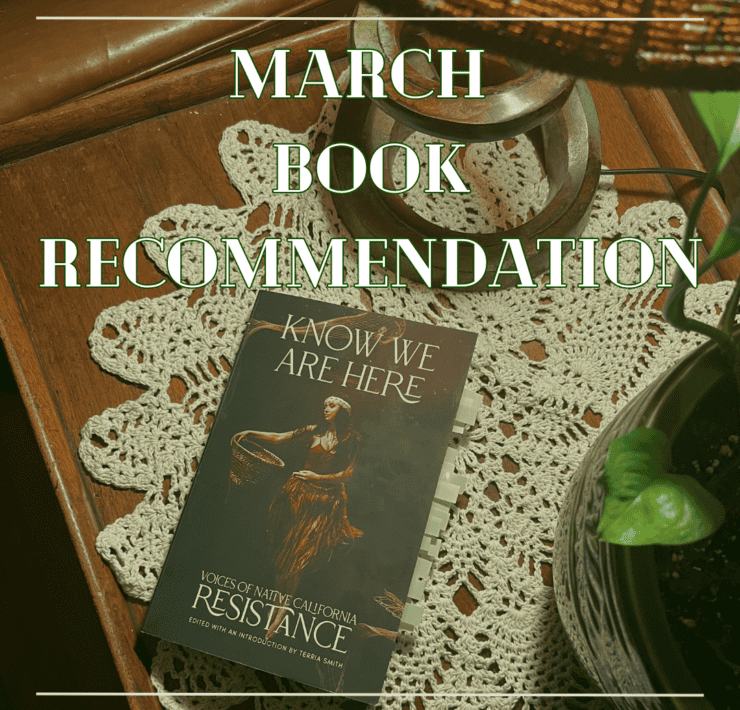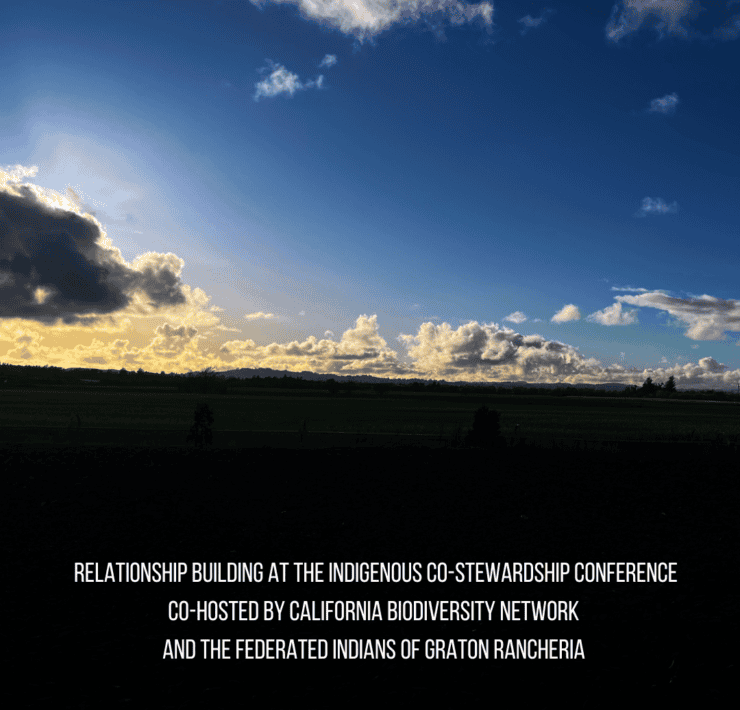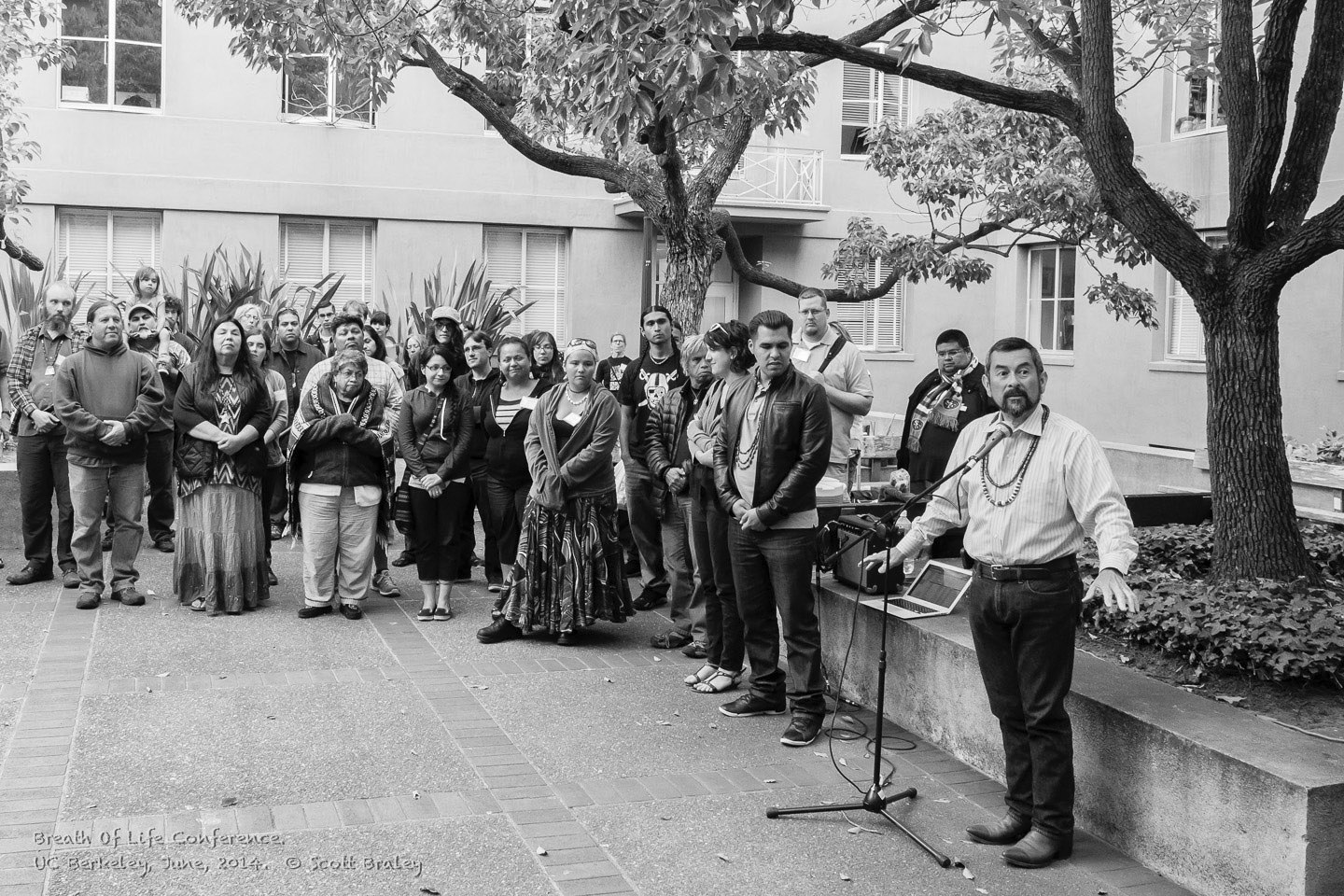
“I hear their voices. Their faces, I cannot see. They have so much to say, and they want to speak with me.” —Brian Tripp (Karuk)
If the first week of June had a guiding mantra, I am confident it would be this. I spent this time focusing on revitalizing words of my native language, Chochenyo, together with the 60 language activists from the California Indian world at the Breath of Life Conference at the University of California, Berkeley hosted by the Advocates for Indigenous Language Survival (AICLS). Breath of Life is unique for several reasons, amongst them is the fact that we regenerate languages that have been sleeping in archives, ethnographic data, and wax cylinder recordings.
The story is personal for me. I am a member of the Muwekma Ohlone Tribe, and the story of my community’s language revitalization is a common one in California. Our language, Chochenyo, was suppressed by multiple layers of invasion, including the Spanish Missions, the Mexican Rancho period, and the American Gold Rush. Each wave was drastically worse than the previous, and the Chochenyo words became spoken less frequently. Against the odds, the last fluent first language speakers of our language recorded and preserved the words from permanent extinction. However, Chochenyo stayed asleep after those first language speakers perished — their notes long hidden in dusty archives, in the form of handwritten scribbles on yellow parchment papers, their voices locked on wax cylinder recordings, gathering mold and fading dimmer and less audible with each year that passed. The language stayed asleep for seventy years in the archives. Present and tangible — yet asleep.
The story might seem grim, but quite the opposite is true. The miraculous occurred when our sleeping language was reawakened. The words were relearned from those old archives, the dust was wiped away. The songs and voices of our ancestors were heard on those wax cylinder recordings, and the language became alive, nudged into consciousness and heard again. The words were given a second chance at life, and this is for me what the Breath of Life conference is about. There is soul, ethos, and passion that is connected to the languages we are relearning. In these languages world views are portrayed, beauty is expressed, and we hear the deepest sense of California. We hear the land itself — full of contrasts, and full of absolute wonder.
The reality is that not all Indian languages in California have to be reawakened, but all are threatened. Breath of Life aims to reverse this tide with the primary goal being to help create speakers in California Indian communities where no fluent first language speakers remain through existing documentation, like the very same archives my language, Chochenyo, are stored in. Each of the 60 participants in attendance is teamed with a linguist, whom we call our linguistic buddies to help guide those working with their languages with phonetics, pronunciation, word creation, and ways to understand different writing systems. For six days, we work with syntax, morphemes, IPA, and suffixes — all terms I had no idea about until my linguistic buddy explained with (surprising) simplicity. We are not taught our languages by linguists, but we are taught how to teach ourselves.
A typical schedule of Breath of Life includes morning breakfast, important updates, work in various University of California, Berkeley archives such as the Bancroft Library. Lunch at Noon, followed by afternoon workshops on grammar, song, pronunciation, stories of inspiration to name a few! Dinner follows on our own, where we visit with our language groups and newly created friends, and work on our final project — which is the culmination of a week’s worth of work. We repeat this every day, mixing in cultural activities, such as a Wednesday night barbecue and cultural sharing, followed by hand games that went on much later as gambling songs roared into the night sky, and some may have lost more money than expected. Thursday evening we made a group trip to Mission Dolores in San Francisco, where I personally gave a tour of changes we are making to incorporate an Indian voice, and we visited the hidden murals, painted in the 1700s, in the Mission attic. We focus on culture during this conference, because language and culture are inately linked — they go hand in hand.
In the process of revitalizing language, we build a multigenerational support network, a community, where our shared interests seem to trump our differences. It is an amazing, powerful, and deep feeling — stories are told, prayers are whispered, songs shared, and we connect and explore each other, as we connect with our ancestors’ words. It is the story that is contemporary and modern, but rooted in the ancient that makes Breath of Life so unique for me. To me, it feels as if we are defying gravity.
Like the Brian Tripp quote that was visible throughout the conference “I hear their voices. Their faces, I cannot see. They have so much to say, and they want to speak with me.” We as Native language activists are walking in the shadows of our ancestors, and they speak to us through their stories. They guide us with our languages, and through them we learn. I am honored, humbled, and grateful this conference occurred and I could participate. I couldn’t have asked for a better way to start the summer. Kiš hórše ‘ék-hinnan ne Túuxi, my heart is good today.
FOR MORE INFORMATION VISIT:
http://www.scottbraley.com/ScottBraley/2014_Events/Pages/Breath_Of_Life_2014


